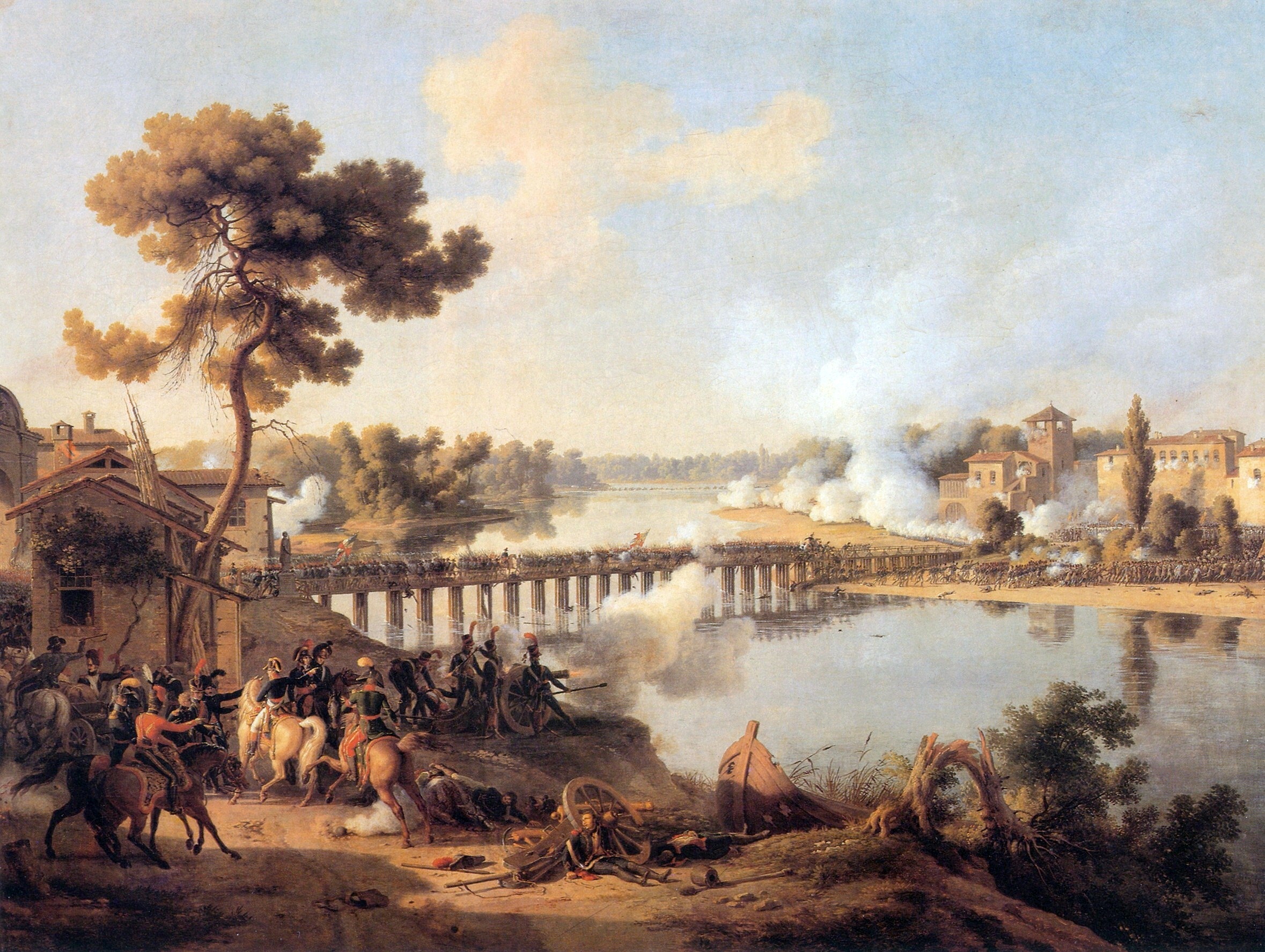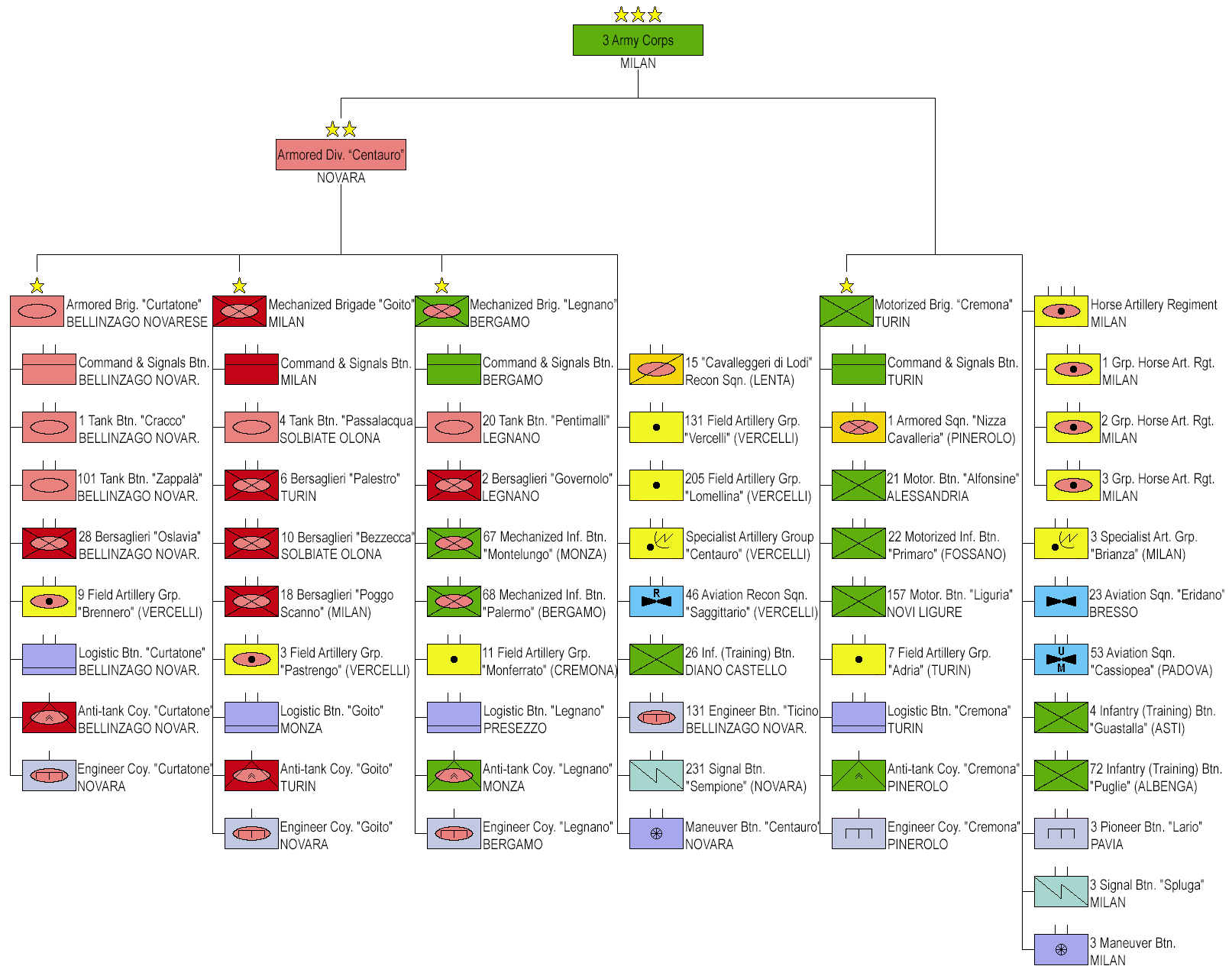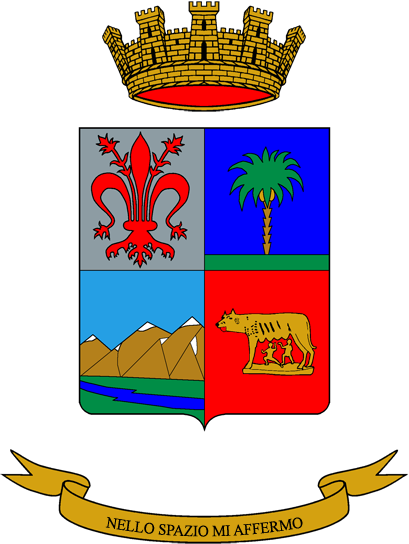|
3rd Sappers Fortification Regiment
The 3rd Engineer Regiment () is a military engineering regiment of the Italian Army based in Udine in Friuli-Venezia Giulia. The regiment is the engineer unit of the Cavalry Brigade "Pozzuolo del Friuli". In 1926, the Royal Italian Army formed the 3rd Engineer Regiment in Lodi, Lombardy, Lodi. During the Second Italo-Ethiopian War and World War II the regiment's depot formed engineer battalions and smaller units, which deployed with divisions and corps to the fronts of the war. After the announcement of the Armistice of Cassibile on 8 September 1943 the regiment was disbanded by Operation Achse, invading German forces. In 1954, the unit was reformed as 3rd Engineer Grouping and assigned to the V Army Corps (Italy), V Army Corps. In 1955, the grouping was renamed 3rd Pioneers Fortification Regiment. In 1975, the regiment was disbanded and the regiment's XXXI Sappers Fortification Battalion became an autonomous unit, which was renamed 3rd Sappers Battalion "Verbano". After the regi ... [...More Info...] [...Related Items...] OR: [Wikipedia] [Google] [Baidu] |
Italian Army
The Italian Army ( []) is the Army, land force branch of the Italian Armed Forces. The army's history dates back to the Italian unification in the 1850s and 1860s. The army fought in colonial engagements in China and Italo-Turkish War, Libya. It fought in Northern Italy against the Austro-Hungarian Empire during World War I, Abyssinia before World War II and in World War II in Albania, Balkans, North Africa, the Soviet Union, and Italy itself. During the Cold War, the army prepared itself to defend against a Warsaw Pact invasion from the east. Since the end of the Cold War, the army has seen extensive peacekeeping service and combat in Afghanistan and Iraq. Its best-known combat vehicles are the Dardo IFV, Dardo infantry fighting vehicle, the Centauro (Tank destroyer), Centauro tank destroyer and the Ariete tank and among its aircraft the Agusta A129 Mangusta, Mangusta attack helicopter, recently deployed in UN missions. The headquarters of the Army General Staff are located in Rom ... [...More Info...] [...Related Items...] OR: [Wikipedia] [Google] [Baidu] |
Lodi, Lombardy
Lodi ( , ; Western Lombard, Ludesan: ) is a city and ''comune'' (municipality) in Lombardy, northern Italy, primarily on the western bank of the Adda River, Italy, River Adda. It is the capital of the province of Lodi. History Antiquity Lodi was a Celts, Celtic village; in ancient Rome, Roman times it was called, in Latin, Laus Pompeia (probably in honour of the consul Gnaeus Pompeius Strabo) and was known also because its position allowed many Gauls of ''Gallia Cisalpina'' to obtain Roman citizenship. It was in an important position where a vital Roman road crossed the Adda (river), River Adda. Lodi became the Holy See, see of a Roman Catholic Diocese of Lodi, diocese in the 3rd century. Saint Bassianus (San Bassiano) is the patron saint of the town. Middle Ages A Medieval commune, free commune around 1000, it fiercely resisted the history of Milan, Milanese, who destroyed it in 1111. The old town corresponds to the modern Lodi Vecchio. Frederick Barbarossa rebuilt it on it ... [...More Info...] [...Related Items...] OR: [Wikipedia] [Google] [Baidu] |
II Army Corps (Italy)
The II Army Corps () was a corps of the Royal Italian Army between 1877 and 1943. History During World War I, it fought on the Western Front under General Alberico Albricci in 1918. It distinguished itself during the Third Battle of the Aisne and the Second Battle of the Marne, particularly at Bligny and on the sector Courmas – Bois du Petit Champ. The Corps contributed significantly to stopping the German offensive on Eparnay, which was aimed at outflanking Reims. It took part in the Second Italo-Ethiopian War in 1935–1936 under General Pietro Maravigna. During World War II, it took part in the Italian invasion of France in 1940 and fought on the Eastern Front in 1942–1943. The Corps suffered very heavy losses during Operation Little Saturn and was forced to retreat to Voroshilovgrad and from there to Gomel. Between 26 April and 22 May 1943, the remnants of the Corps were repatriated to Italy, to be reformed in Tuscany under the jurisdiction of the 5th Army. Afte ... [...More Info...] [...Related Items...] OR: [Wikipedia] [Google] [Baidu] |
III Army Corps (Italy)
The III Army Corps was one of three corps the Italian Army fielded during the Cold War. Based in the regions of Lombardy and Piedmont the corps was the army's operational reserve, while the 4th Alpine Army Corps and the 5th Army Corps, both based in the North East of Italy, were the army's front-line units. After the end of the Cold War the corps was reduced in size and on 1 December 2000 it ceded its last brigades to the 1st Defence Forces Command (COMFOD 1°). The personnel of the 3rd Army Corps was used to raise the NATO Rapid Deployable Italian Corps in January 2001. History Origins The history of the 3rd Army Corps begins after the second Italian war of independence. Following the Italian-French victory over the Austrian Empire, the Kingdom of Sardinia annexed the Papal Legations in present-day Emilia Romagna. Thus on 1 April 1860 the 3rd Higher Military Command was activated as a territorial command in Parma and tasked to defend the newly acquired territory between the ... [...More Info...] [...Related Items...] OR: [Wikipedia] [Google] [Baidu] |
3rd Signal Regiment (Italy)
The 3rd Signal Regiment () is a national support signals regiment of the Italian Army based in Rome in Lazio. The regiment is the army's oldest signal regiment and assigned to the army's Signal Command. The regiment's three battalions operate the army's telecommunications network in central Italy and Sardinia. The regiment was formed in 1883 as an engineer regiment, which, in 1895, became responsible for training the Royal Italian Army's telegraph personnel and for providing telegraph units to operational units. In 1912, the regiment added the training of wireless telegraphy personnel to its duties. During World War I the regiment formed a total of 127 companies, 59 of which were transferred in 1918 to the newly formed 7th Engineer Regiment (Telegraphers). In 1920, the regiment was disbanded and its companies formed into battalions, which were assigned to the Royal Italian Army's army corps. In 1943, the Italian Co-belligerent Army formed a signal battalion for its general staff ... [...More Info...] [...Related Items...] OR: [Wikipedia] [Google] [Baidu] |
World War I
World War I or the First World War (28 July 1914 – 11 November 1918), also known as the Great War, was a World war, global conflict between two coalitions: the Allies of World War I, Allies (or Entente) and the Central Powers. Fighting took place mainly in European theatre of World War I, Europe and the Middle Eastern theatre of World War I, Middle East, as well as in parts of African theatre of World War I, Africa and the Asian and Pacific theatre of World War I, Asia-Pacific, and in Europe was characterised by trench warfare; the widespread use of Artillery of World War I, artillery, machine guns, and Chemical weapons in World War I, chemical weapons (gas); and the introductions of Tanks in World War I, tanks and Aviation in World War I, aircraft. World War I was one of the List of wars by death toll, deadliest conflicts in history, resulting in an estimated World War I casualties, 10 million military dead and more than 20 million wounded, plus some 10 million civilian de ... [...More Info...] [...Related Items...] OR: [Wikipedia] [Google] [Baidu] |
3rd Engineer Regiment (Telegraphers)
The 3rd Signal Regiment () is a national support signals regiment of the Italian Army based in Rome in Lazio. The regiment is the army's oldest signal regiment and assigned to the army's Signal Command. The regiment's three battalions operate the army's telecommunications network in central Italy and Sardinia. The regiment was formed in 1883 as an engineer regiment, which, in 1895, became responsible for training the Royal Italian Army's telegraph personnel and for providing telegraph units to operational units. In 1912, the regiment added the training of wireless telegraphy personnel to its duties. During World War I the regiment formed a total of 127 companies, 59 of which were transferred in 1918 to the newly formed 7th Engineer Regiment (Telegraphers). In 1920, the regiment was disbanded and its companies formed into battalions, which were assigned to the Royal Italian Army's army corps. In 1943, the Italian Co-belligerent Army formed a signal battalion for its general staff ... [...More Info...] [...Related Items...] OR: [Wikipedia] [Google] [Baidu] |
5th Army Corps (Italy)
The V Army Corps was one of three corps the Italian Army fielded during the Cold War. Based in the regions of Veneto and Friuli-Venezia-Giulia the corps was the army's main combat force. The 5th Army Corps was arrayed close to the Yugoslavian border and tasked with meeting any Warsaw Pact forces that crossed the border. On the left flank of the corps the 4th Alpine Army Corps was tasked with blocking the Alpine passes and in the rear of the corps the 3rd Army Corps served as operational reserve. After the end of the Cold War the corps was reduced in size and on 1 October 1997 it became the 1st Defence Forces Command (COMFOD 1°). In 2013 the COMFOD 1° was disbanded and its function and brigades taken over by the 20th Infantry Division Friuli in Florence. History Origins The history of the 5th Army Corps begins with Garibaldis Expedition of the Thousand. After Garibaldi scored victory after victory in his conquest of the Kingdom of the Two Sicilies, the Victor Emmanu ... [...More Info...] [...Related Items...] OR: [Wikipedia] [Google] [Baidu] |
V Army Corps (Italy)
The V Army Corps was one of three corps the Italian Army fielded during the Cold War. Based in the regions of Veneto and Friuli-Venezia-Giulia the corps was the army's main combat force. The 5th Army Corps was arrayed close to the Yugoslavian border and tasked with meeting any Warsaw Pact forces that crossed the border. On the left flank of the corps the 4th Alpine Army Corps was tasked with blocking the Alpine passes and in the rear of the corps the 3rd Army Corps served as operational reserve. After the end of the Cold War the corps was reduced in size and on 1 October 1997 it became the 1st Defence Forces Command (COMFOD 1°). In 2013 the COMFOD 1° was disbanded and its function and brigades taken over by the 20th Infantry Division Friuli in Florence. History Origins The history of the 5th Army Corps begins with Garibaldis Expedition of the Thousand. After Garibaldi scored victory after victory in his conquest of the Kingdom of the Two Sicilies, the Victor Emmanuel II ... [...More Info...] [...Related Items...] OR: [Wikipedia] [Google] [Baidu] |
Operation Achse
Operation Achse (), originally called Operation Alaric (), was the codename for the German operation to forcibly disarm the Italian armed forces after Italy's armistice with the Allies on 3 September 1943. Several German divisions had entered Italy after the fall of Benito Mussolini in July 1943, while Italy was officially still an ally of Germany, despite the protests of the new Italian government under Pietro Badoglio. The armistice was made public on 8 September. German forces moved rapidly to take over the Italian zones of occupation in the Balkans and southern France, and to disarm Italian forces in Italy. Some Italian troops, with no orders from superiors, and hampered by desertions, resisted the Germans. On the Greek island of Cephalonia, 1,315 Italian soldiers were killed in action against the Germans and over 5,100 Italian soldiers from the 33rd Infantry Division "Acqui" were summarily executed by the German Army after running out of ammunition and surrenderi ... [...More Info...] [...Related Items...] OR: [Wikipedia] [Google] [Baidu] |






